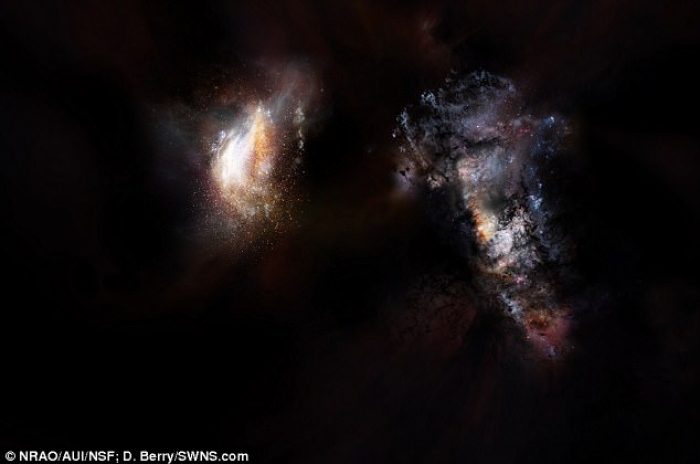Scientists discover two huge galaxies on the edge of space

The galaxies are so close together they will soon merge to form the largest galaxy ever observed from that period in cosmic history, possibly creating new alien worlds.
The new study, published by an international research team which included scientists from University College London (UCL), gives new details about the emergence of large galaxies in the early stages of the universe.
They push back the estimated epoch of massive-galaxy formation and the role that dark matter plays in assembling the most massive structures in the universe.
This contradicts current theories which suggest galaxies in the early universe were similar in size to the small, low-mass dwarf galaxies we see today.
Larger galaxies weren't believed to have come into existence until a few billion years later.
Both galaxies appear to be going through a burst of activity, forming new stars and potentially new planets.
The discovery also revealed these uncommonly large galaxies are nestled inside an even larger cosmic structure, a halo of dark matter several trillion times bigger than the sun.
Scientists discovered the galaxies using the Atacama Large Millimeter / submillimeter Array (Alma), a collection of radio telescopes in Chile.
Co-author Dr Thomas Greve, said: 'We expect the earliest galaxies that formed just a few hundred million years after the Big Bang to be "nuggets" of stars and gas - perhaps with some similarities to dwarf galaxies we see in the nearby universe.
'This system is anything but that, however.
'Our Alma observations have revealed a massive system with extreme amounts of on-going star formation, gas, and dust at a time when the Universe was less than a billion years old, suggesting that these "nuggets" of stars and gas were able to merge and form large galaxies very rapidly.
'In fact, the presence of such an extremely massive galaxy, and the massive dark matter halo that is must reside in, this early on in the Universe's history is right at the limit of what is allowed by our best models of galaxy formation and evolution.'















































